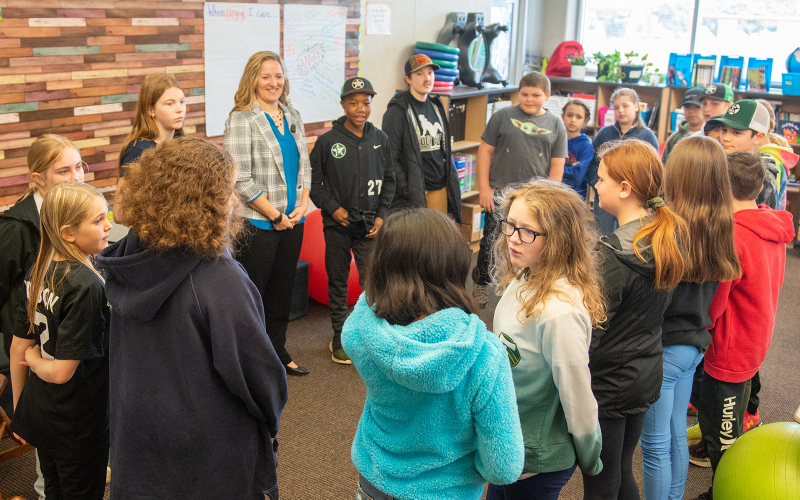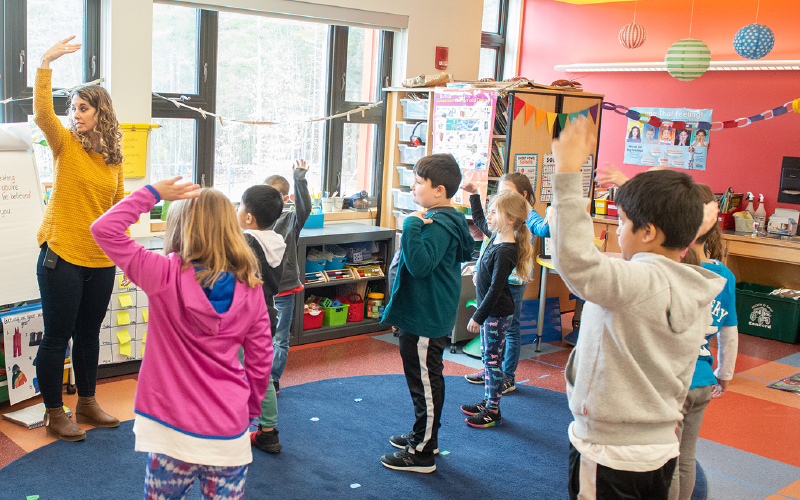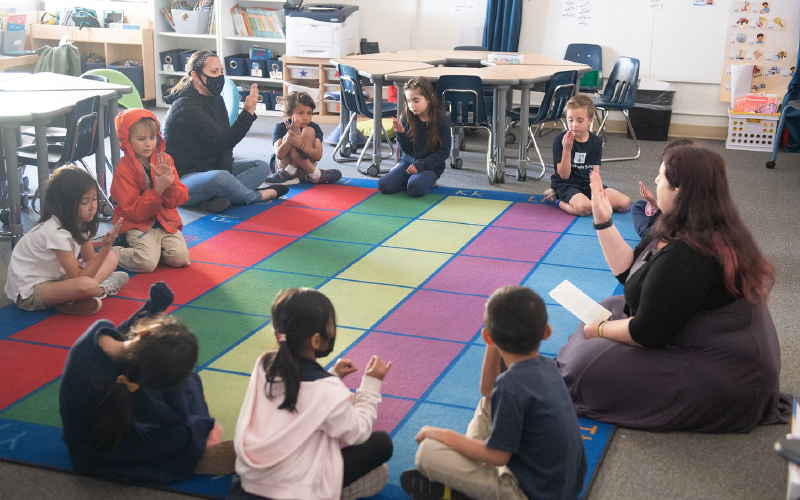Cultivating Classroom Success Through Mindfulness

Through mindfulness practice, students will discover how to remain in control of their emotions and stay on track for success. There are numerous ways to bring mindfulness into the classroom and provide students with the ability to live joyful, productive, healthy, and successful lives.
Why Practice Mindfulness?
When we consider what it looks like to take care of ourselves and our well-being, several things may come to mind, such as moving our bodies, practicing good hygiene, and eating foods that we enjoy. These are all very important parts of our routine, but how often do we remember to take care of our minds, too? Our mind is hard at work, just as our body is, and there are many ways that we can and should take care of it. Engaging in mindfulness—a meditative practice that focuses on breathing and bringing awareness to the present moment—is a wonderful way to tend to our mind and, in turn, reap all of the many benefits that come along with it.

Students, teachers, and parents can find ways to integrate mindfulness into their lives to help manage their emotions and maintain a successful trajectory. When emotional challenges arise in the classroom and students and teachers are not equipped with the proper strategies to handle them, there is a likelihood of experiencing burnout. (Jennings et al., 2012). Mindful practices will allow for nonacademic student needs to be addressed and supported so that students are empowered to better regulate their emotions and turn them into something positive. When we face so many different emotions each day, it is valuable to have the tools we need to self-regulate, refocus our attention, and navigate our emotions without judgment.
The Benefits of Mindfulness
Regularly engaging in mindfulness can result in significant psychological and academic improvements. When students are stressed or overwhelmed, their brains have more difficulty reaching their full potential. By equipping students with their own mindfulness techniques, we can set them up for success throughout their educational career and beyond. This success can look like a number of different things, including:

- Better stress management. By engaging in breath and body awareness, students can reduce the amount of unhealthy stress they experience (Jennings et al., 2012).
- Lowered levels of depression. Mindfulness work reduces the brain’s reaction to negative stimuli (Tatter, 2019), meaning that adverse thoughts and feelings, as well as unpleasant environmental factors, are less likely to have a harmful impact on the student’s mental health.
- Enhanced memory. Students who practice mindfulness on a regular basis experience increased memory capacity and improved ability to recall information, which leads to higher academic performance. This is a result of lowered levels of stress (Vogel & Schwabe, 2016).
- Improved empathy and compassion. Through exercises that promote mindful listening, students will be able to better hear what others are saying without reacting with judgment or emotion. They will also be more sensitive to and understanding of the needs of others (Jennings et al., 2012).
Student Success and Mindfulness
How this success is achieved can look a number of ways, and each student will have their own preferences as to how they would like to implement mindfulness into their routines. When we offer students the opportunity to try out different ways to cultivate mindfulness, we give them the autonomy to commandeer their own success and make mindfulness a lifelong practice.

In schools that integrate mindfulness into their curriculum, many positive outcomes have been achieved. Classrooms that practice mindfulness not only see a reduction in disruptive behavior, but they also see lower rates of peer bullying, lessened fatigue, and improved self-confidence (Waterford.org, 2021). This practice also results in better conflict resolution, enhanced student-teacher relationships, and strengthened impulse control (Jennings et al. 2012), all of which helps create an enjoyable and productive classroom environment.
Cultivating a Mindful Classroom
It does not take an extensive amount of time or effort to cultivate a mindful classroom environment. Here are some tips to keep in mind when striving to effectively bring mindfulness to your students:

- Set aside time each day to engage in mindfulness. This could be at the very beginning of the day or anytime throughout the day. Making mindfulness a regular occurrence will keep students receptive and in tune with the practice.
- Try different mindfulness practices with students. Meditation, yoga, and journaling are a few different ways to explore being mindful with your students. By offering several options, students can develop an understanding of which practices they prefer.
- Talk to students about why mindfulness is important. Educate students about the benefits of mindfulness and the ways that it can be used as a tool to navigate their feelings and promote positivity and happiness so that they can see the bigger picture.
By empowering students to regulate their thoughts and emotions, we are making the most out of their education and giving them tools that will change their lives for the better. Mindfulness is how we take care of our minds to live successful, joy-filled lives.
References
Jennings, P. A., Lantieri, L., & Roeser, R. W. (2012.). Supporting educational goals through cultivating mindfulness: Approaches for teachers and students. In P. M. Brown, M. W. Corrigan, & A. H. Higgins-D’Alessandro (Eds.), Handbook of prosocial education (pp. 371–397). Rowman & Littlefield. https://www.researchgate.net/publication/235324459_Supporting_educational_goals_through_cultivating_mindfulness_Approaches_for_teachers_and_students
Tatter, G. (2019, January 23). Making time for mindfulness. Harvard Graduate School of Education. https://www.gse.harvard.edu/news/uk/19/01/making-time-mindfulness
Vogel, S., & Schwabe, L. (2016). Learning and memory under stress: Implications for the classroom. Npj Science of Learning, 1. https://doi.org/10.1038/npjscilearn.2016.11
Waterford.org. (2019, February 26). Why mindfulness strengthens social emotional development and academic achievement. https://www.waterford.org/education/mindfulness-in-schools/




